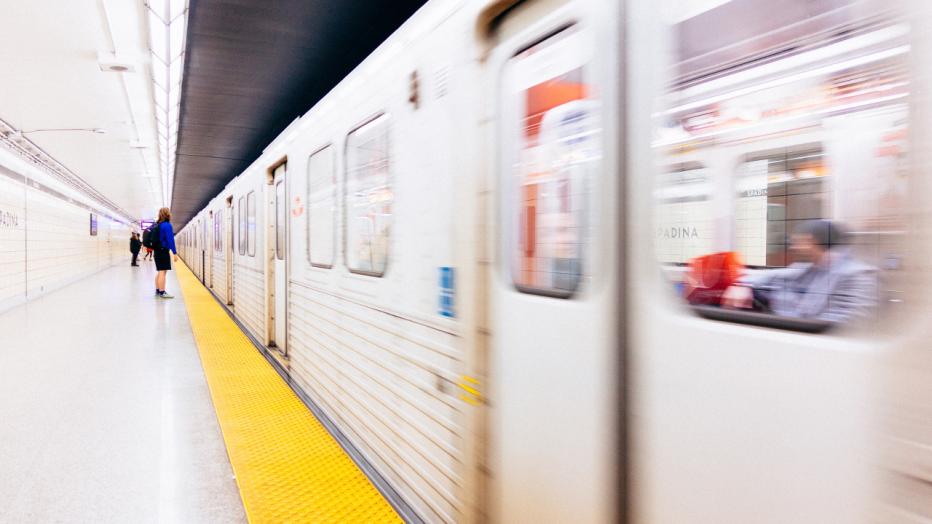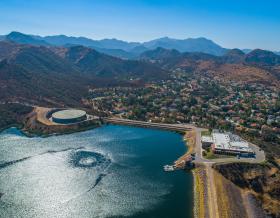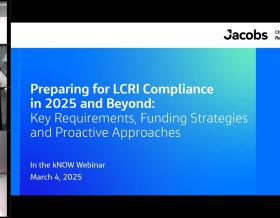
Jacobs Director of Economics & Global Technology Lead Transport Economics John Siraut spoke along with other subject matter experts as part of The Big Rethink. The theme, How Public Transit Bounces Back, supported a conversation about ways to accelerate public transportation ridership and the importance of public trust in the post-pandemic world of urban mobility. Read highlights in this piece.
Stay home, save lives. The message has been repeated in many languages across most of the globe and applies to some of the world’s busiest public transit networks where patronage is down by almost 99%. Our streets are almost devoid of cars and an eerie quiet has descended on many city centers, broken only by the songs of birds. People have taken to cycling and walking in the road to maintain social distancing (another phrase which has gone global), leading to an increasing number of cities reallocating space from motor vehicles to walkers and cyclists. Air quality has visibly improved, while it has not gone unnoticed by researchers in the US and Italy that there appears to be a link between poor air quality and increased COVID-19 mortality.
At present public transit authorities are concentrating on continuing to provide services for essential workers while looking with increasing alarm at their financial position. London and New York transit systems are seeing revenues down by over $100 million a week while operating costs remain broadly the same.
So, what is the future for public transit? There are a lot of potential scenarios, some positive, but many negative. Any requirement to continue social distancing will significantly reduce capacity on the network. As heard on The Big Rethink, How Public Transit Bounces Back, in Lausanne Switzerland, for example, the maximum number of passengers allowed on the automated metro train is 30 compared to 230 normally and 20 on an articulated bus (instead of 110). Bus and rail stations may need to be reconfigured and payment mechanisms changed to meet the 2 meter/6 foot distance requirement. Some transit authorities have gone cashless while others are presently free to minimize passenger contact for transit staff.
Passengers using Wuhan’s recently reopened metro have to scan their health QR codes and check body temperatures before using the system. While such invasive tracking of passengers is unlikely to be seen outside some Asian countries, elsewhere consideration is being given to the use of voluntary apps to track and trace people if required, which may either reassure or put people off from using public transit networks. According to Chinese news reports, traffic on Wuhan subway is only around 15% of normal levels in its second week of reopening while bike hire is at record levels and car use is up to 80% of previous levels.
A significant proportion of the workforce are now working from home. This proportion varies considerably from city to city depending on its economic make-up but typically ranges from 40-60% for central business district (CBD) workers where people are most likely to use public transport. Most expect a proportion of the workforce will work an increasing number of days at home in the future. While in the short term this is a further revenue loss to transit operators, in the longer term it may be to their advantage. The requirement to provide so many services in a short space of time which is then under-utilized for the rest of the day – which is why most transit operations require financial support. If that peak traffic reduced (assuming off-peak traffic is maintained) then there is the opportunity to reduce the number of vehicles and staff required in the peak and hence costs. However, the worst-case scenario is an exaggeration of the present situation of more people working at home on Mondays and Fridays and operators still having to cope with substantial peaks on even fewer days (so no saving in operating costs but less revenue). In many U.K. cities public transport use is down by 10% on a Friday morning peak compared to the rest of the working week.
Transit operators losing substantial revenues is unsustainable. If passengers do not return, then either additional government funding will be required, services will be cut or fares could be raised, leading to a vicious downward spiral of less attractive services, higher fares and fewer passengers.
Smaller or more car accommodating cities are likely to be the hardest hit, while cities such as New York, London and Tokyo where the road and parking network could not cope with a large switch to private transport in their CBDs are likely to see here an eventual rebound in traffic levels. However, plans for transit expansion are being put on hold across the world as authorities see if future travel patterns return to previous levels and funds are diverted to maintain present operations.
What are the positives for public transit? As highlighted above, there has been a marked increase in cycling as people initially avoided crowded transit and now it has become a more attractive method of getting around virtually car free roads. Cities across the world have provided additional space for cyclists, and some such as Milan, are proposing to make it permanent. Based on experience in China electric scooters and bikes will also increase in popularity.
City dwellers have seen their cities become more pleasant places to live, especially in relation to clearly noticeable improvements in air quality. Building on existing concerns about poor air quality and the need to address climate change, pressure is likely to be exerted to remove more traffic from our cities. With social distancing requiring pavements/sidewalks to be widened, curb space is being moved from cars to people, continuing the trend – especially in European cities – to gradually reduce the level of parking in CBDs. We are also seeing more cities looking at creative ways to manage demand, especially in the face of the massive increase in ride hailing services. The latter have also seen a massive fall in use in the present crisis.
It has been suggested that now is the time to bring in free public transit to restore patronage and prevent increasing car use. However, the evidence suggests that when transit is provided free it attracts far more people who previously walked or cycled rather than getting people out of their cars. Is it better to restrict car use by removing parking and or congestion pricing?
The forced move away from cash towards smart or contactless payments will provide transit operators with a rich source of data to better plan future networks. The ability to rapidly analyze huge data sets provides an opportunity for transit operators to more quickly react to changing travel patterns, and if need be, restructure their networks in future restricted periods to reduce the amount of empty buses, ensuring it better meets the needs of essential workers. In addition, the present situation has increased the interest in running driverless services and any future similar lockdowns could see the trial of such services when roads are virtually empty.
We will not know what a “post COVID-19” world will look like for some time, but the present situation provides an opportunity for cities bold enough to seize it to radically reduce car use in our CBDs – thereby significantly improving health, promoting equality by retaining transit as an option for those who don’t have cars, helping to address climate change and supporting future economic growth and retaining high quality public transit as a choice for mobility. For those that do not, the future could be one with that remains car focused with its congestion, poor air quality and poor accessibility for the most vulnerable in society.
Jacobs Director of Economics & Global Technology Lead Transport Economics John Siraut spoke along with other subject matter experts as part of The Big Rethink. The theme, How Public Transit Bounces Back, supported a conversation about ways to accelerate public transportation ridership and the importance of public trust in the post-pandemic world of urban mobility. John specializes in the wider economic and social impacts of transport policies and investment, as well as advising on economic development and regeneration issues.












































